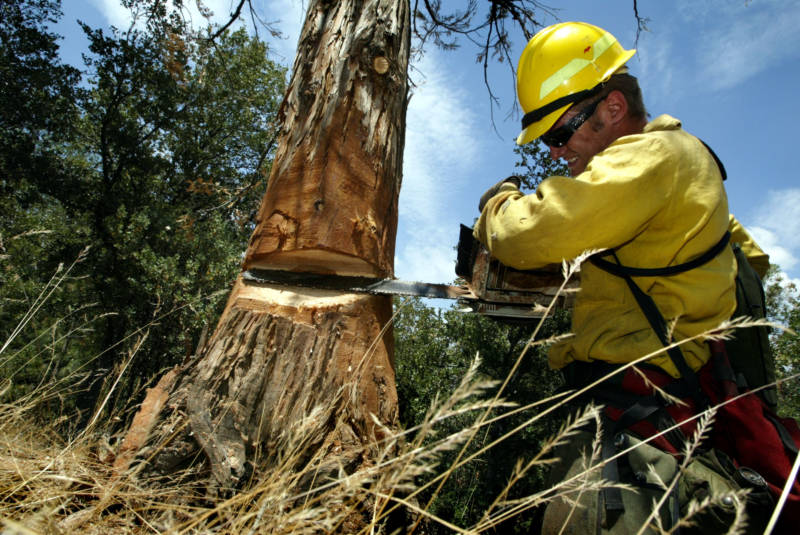The U.S. Forest Service has extended public comment period on a controversial plan to relax environmental permitting for new logging and forest management projects across millions of acres of federal forest lands.
The proposal would upend long-held environmental practices that have been in place since 1970, and make it easier for timber harvesting and bulldozing forest roads in all 20 of California’s federal forests, including national forests in Mendocino, Tahoe, Los Padres, and Lassen.
The Forest Service has said that, with its limited staff, extended droughts, pests, and tree diseases have made it difficult for the agency to protect people from catastrophic wildfires.
Only about two million acres of federal forests are treated with thinning projects, prescribed burns or logging each year. The Forest Service would like to do a lot more. They estimate 17 million acres of federal forests at high fire risk could be logged to reduce fire danger and 35 million acres should be treated with prescribed burns. The proposed rule changes will allow them to act more quickly, officials say.
Regulation Rollback
But that’s only part of the picture. In 2018, President Donald Trump issued an executive order that encouraged federal agencies to ease environmental review for industrial operations on federal land.
The administration has called for more ‘active’ logging in western forests and wants to open up more federal forests to the timber industry. They say it will provide badly needed jobs in rural communities.
“On the one hand, periodically updating federal agency regulations is a good thing,” said Alejandro Camacho, a law professor at UC Irvine.
“But this will be the largest change in the regulation in a decade,” he said. “The most prominent changes are concerning because they open a category of actions by the agency that they are trying to exclude from environmental review.”
The proposal would more than double the size of projects that can bypass the analysis. For commercial logging and timber harvesting, that means expediting any proposal smaller than 4,200 acres, Camacho said. For forest thinning projects, where forest managers clear dense stands of trees and thick brush, the threshold is 7,000 acres.
Environmentalists have decried the plan, calling it a giveaway for corporations and saying it has the potential to destroy the environment. They say the rule change would shield logging contracts from public and scientific scrutiny, and could extend to new oil and gas drilling.
In California, however, most of the federal drilling occurs on land overseen by the Bureau of Land Management, which is a separate agency with its own environmental process.
Randi Spivak, a public lands policy advocate for the Center for Biological Diversity, said that if the rule passes as it is written, the public will have no voice on the majority of decisions the government makes about national forests.
“It’s the voice of the people,” Spivak said. “Public comment is an opportunity for everyday citizens who love their national forests to get to comment and raise concerns over proposals by the Forest Service.”
In recent weeks, environmentalists rallied their people to oppose the plan, who flooded the Forest Service with comments. The comment period was initially supposed to last 60 days, ending on August 12. But the Forest Service has extended the comment period to the end of the month.
The Forest Service was not available for comment at the time of publication.

